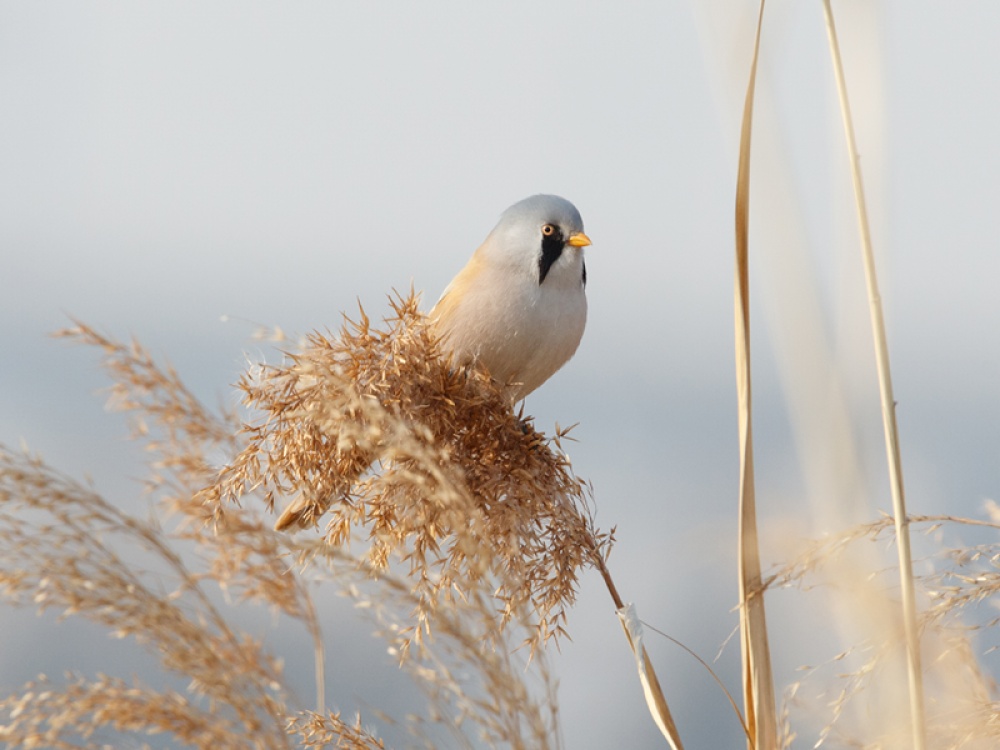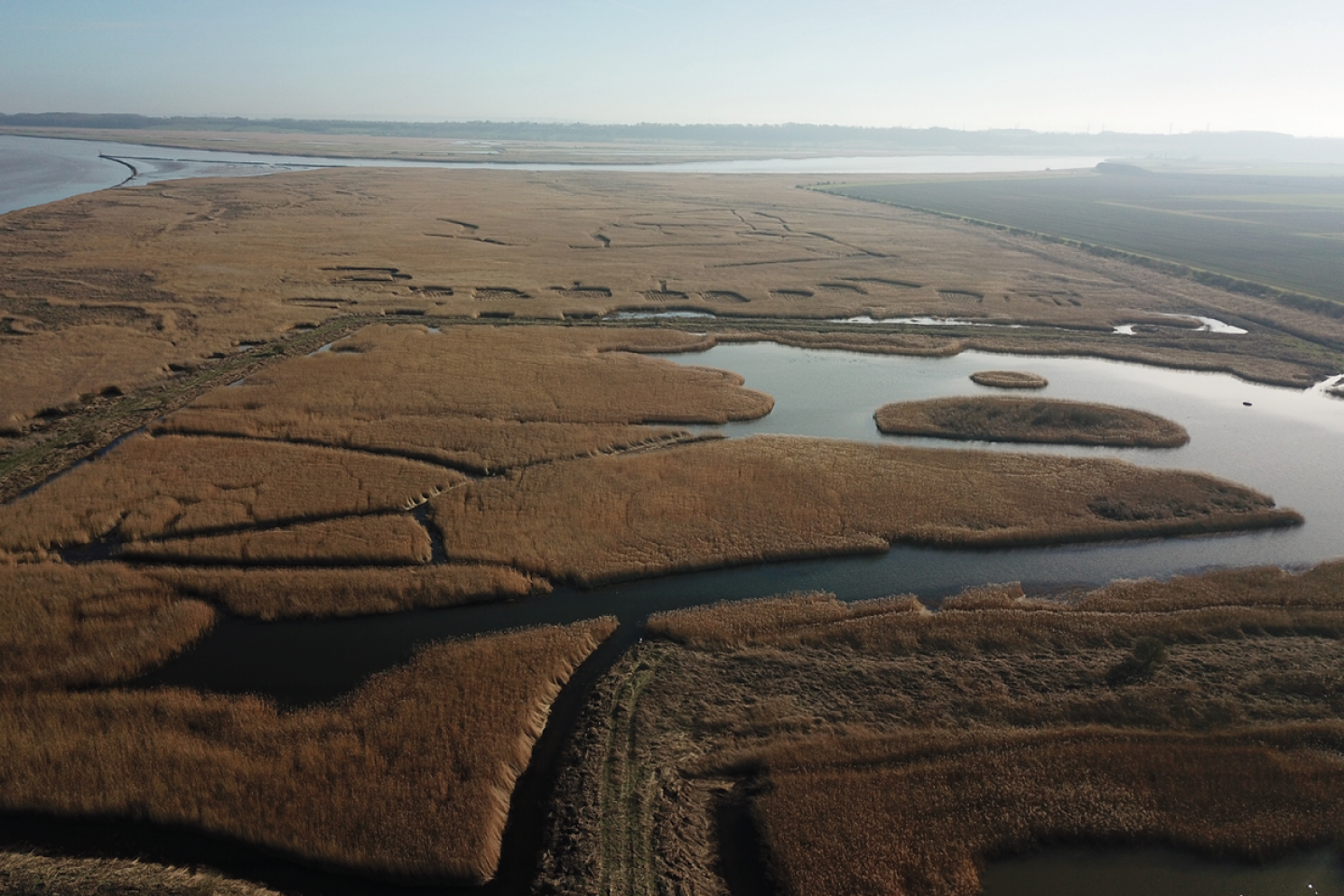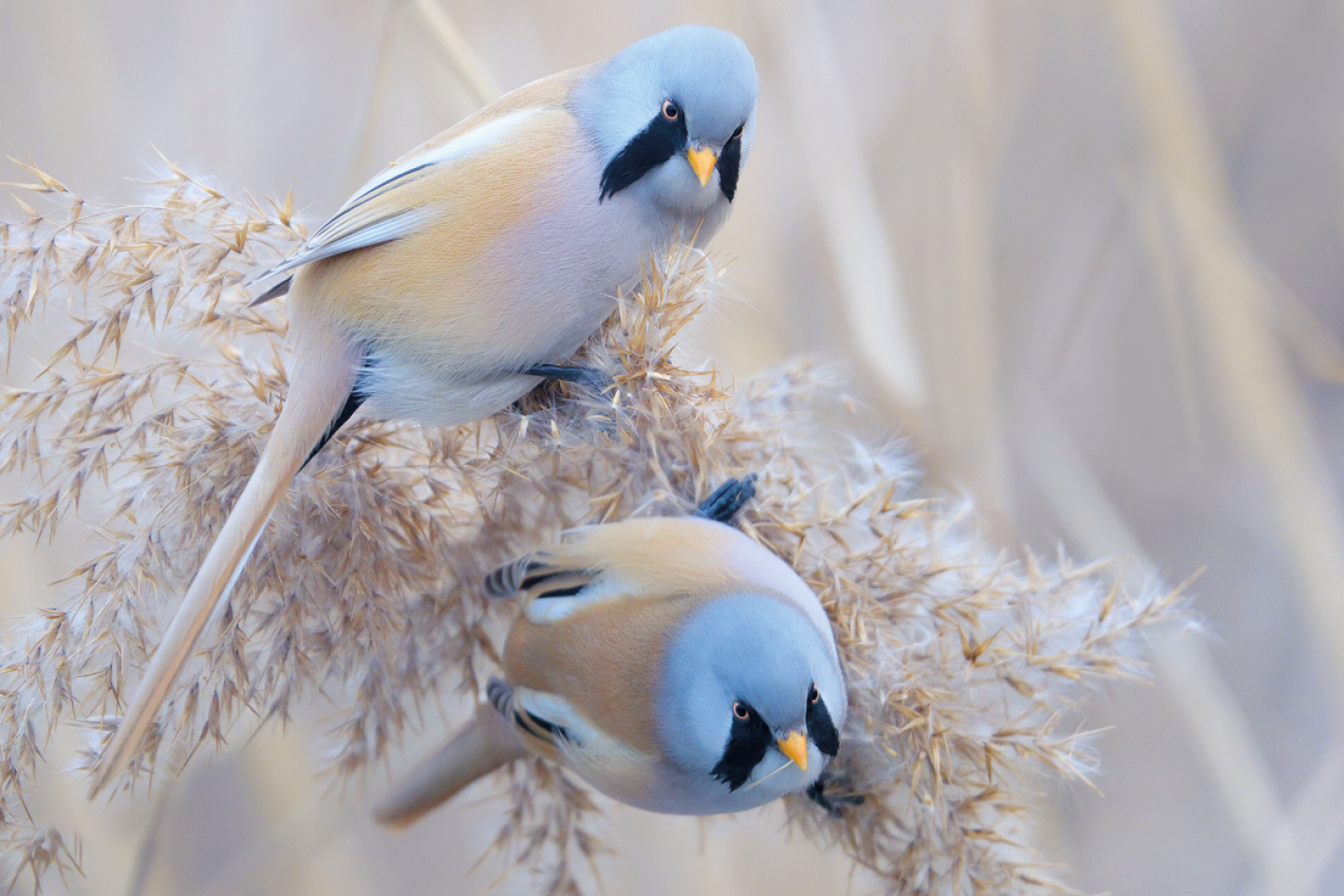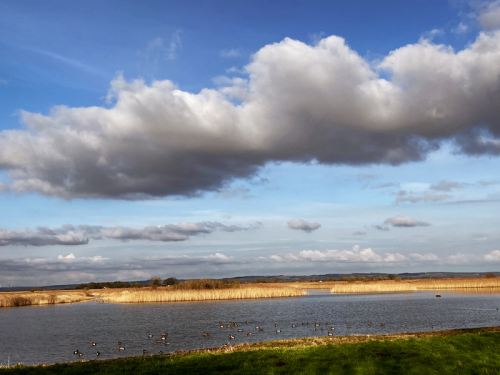How Bearded Tits Have Made a Comeback in East Yorkshire

The 25 years of careful conservation work at RSPB Blacktoft Sands in the East Riding of Yorkshire has led to a boom in the population of rare bearded tits
The bearded tit is a small, round, orangey-brown bird with a long tail. Despite the name, they are neither tits (they’re more closely related to larks) nor bearded, but are in fact distinguishable by the black Poirot-esque moustache markings seen on males. Sociable and noisy, ‘beardies’ as they are affectionately known, can often be heard before they’re seen, identifiable by their pinging call. They’re the only British songbird to stay in reed beds all year, such as those found at RSPB Blacktoft Sands.
But beardies are a rare bird, sadly having experienced massive drops in population at the beginning of the century. In 2002, it was estimated that the population had declined to just 45 breeding pairs, raising around 150 young. This national survey marked the start of a programme dedicated to bringing beardies back.
‘When you look at the old records for Blacktoft back in the seventies, there was a lot of bearded tits, but into the eighties and nineties, the population was declining. When we did the survey, we only found about 45 pairs of bearded tits when in the past there’d have been more than 100. There was obviously something wrong,’ says Pete Short, RSPB Humber Estuary Reserves Manager. ‘I read a lot of research papers on the species. I also talked to some people who studied them on other sites and did an awful lot of research work. I saw what they ate, where they ate, where they were flying to and where they went in winter.

‘Bearded tits need to raise a lot of young, they basically live fast, die young. They don’t often live to an old age and they get predated by birds of prey. When it’s extremely cold, you sometimes have mass die-offs when they can’t get to their food. They’re very much a northern bird shaped around a dynamic system – raising lots of young, then losing lots of young at certain times.’
It was discovered that the reed beds weren’t providing sufficient food for the bearded tits, as they change their gut morphology depending on the season. In summer, they eat insects, whereas in winter, they eat reed seed, as well as large amounts of grit particles to grind down the fibrous husks. ‘The reed bed had got to an age where it wasn’t providing enough food for all three broods of bearded tit. It had become very homogeneous,’ explains Pete. ‘From research, it became apparent that when you managed a reed bed by cutting it and allowing it to come back and create areas of water for insects to gather, it provided more resource.’
Pete and his team began by mowing the reed beds by hand, before moving on to tractors and eventually a specialist machine over the course of the 25 years. ‘We created a really big mosaic – when you go up into the air, you can see different patterns and shapes mowed into the reed bed. We don’t cut in set blocks. I used to say to a lot of my staff, “just go out as if you’re drunk and cut”. Wildlife doesn’t follow straight lines, birds like wavy patterns and that creates more edges where insects gather. What we’ve created is a very dynamic habitat so that amount of food and number of birds go up. If you leave it, the food will just decline again.’

The work was successful. In 2024, around 120 pairs of bearded tits produced approximately 500 young – more than double the rate of previous years. Around 10 percent of the total UK population are at Blacktoft, and it was once the only place in Yorkshire where they bred, although they are now also successful at RSPB Fairburn, Old Moor and St Aidan’s. The work wasn’t without issues though, mainly due to outdated and incorrect research on the habits of the birds. ‘One of the big problems was that when you read any old paper on bearded tits, it said they like old reed beds. One of the new findings was that they don’t. They like developing reed beds. They do something called irrupture – they fly up into the air in autumn and you see them across the rivers, going out to find new habitats. Without management, reed beds become old so they’re always looking for developing ones to colonise, and the natural way is by going up the rivers where new habitats would be created.’
The conservation of the beloved beardies is part of a wider, worldwide effort to save species from extinction amid climate concerns. ‘Biodiversity, birds, animals, habitats, they very much weave their way into how the earth exists,’ says Pete. ‘When you start taking away one part, the whole working of the natural world starts to stop and we lose species. You can rebuild a building but you can’t replace and recreate natural species.
‘A lot of people probably don’t look at nature on a day-to-day basis but without it, life would be very dull. Without green, without trees, without butterflies and bees – for me, anyway, and probably for lots of other people, life would be very dull. Nature plays a critical role in the earth existing as it is and I don’t think we truly understand what taking away habitats will do to the earth in the end.’

Pete stresses that anyone can do their bit to help the conservation of birds and wildlife. ‘If you’ve got a back garden, even a small one, having native plants in there and not putting stone down everywhere helps. Having flowers and small bits of greenery is helpful.
‘People can also go out and volunteer. There are lots of organisations that carry out conservation work on the ground. It’s a great way of getting to know people and getting involved if you enjoy hands-on things. Then there’s the monetary form of support for organisations like the RSPB or your local wildlife trusts who are delivering for wildlife on a wider level.’







